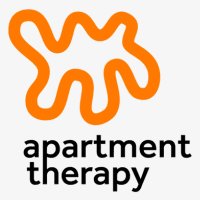
Welcoming a new baby into your home is an exciting time, but it also comes with a lot of responsibilities. One of the most important tasks is ensuring that your home is safe for your little one. Baby proofing your house is not just about preventing accidents; it’s about creating a secure environment where your child can explore and grow. This guide will walk you through essential steps to make your home baby-proof, ensuring peace of mind for you and safety for your baby.
Table of Contents
Understanding the Importance of Baby Proofing
Before diving into the specifics, let’s discuss why baby proofing is crucial. Babies are naturally curious and tend to explore their surroundings. This exploration can lead to dangerous situations if the environment is not adequately secured. Here are some key reasons to baby proof your home:
- Prevent Accidents: Many household items can pose risks, from sharp edges to choking hazards.
- Encourage Independence: A safe environment allows your baby to explore freely without constant supervision.
- Peace of Mind: Knowing your home is safe can reduce anxiety and allow you to enjoy your time with your baby.
Assessing Your Home for Hazards
The first step in baby proofing is to assess your home for potential hazards. Walk through each room and look for items that could be dangerous. Here’s a checklist to help you identify risks:
- Sharp Objects: Knives, scissors, and other sharp tools should be stored out of reach.
- Small Items: Coins, buttons, and small toys can be choking hazards.
- Electrical Outlets: Uncovered outlets can be tempting for little fingers.
- Heavy Furniture: Bookshelves and dressers should be secured to the wall to prevent tipping.
- Cleaning Supplies: Store all cleaning products in locked cabinets or high shelves.
Room-by-Room Baby Proofing Guide
Now that you’ve identified potential hazards, let’s go room by room to ensure every area of your home is safe for your baby.
Living Room
- Secure Furniture: Anchor heavy furniture to the wall to prevent tipping.
- Cover Sharp Edges: Use corner guards on coffee tables and other furniture with sharp edges.
- Hide Cords: Tuck away electrical cords and use cord covers to prevent pulling.
- Remove Breakables: Keep fragile items out of reach or in cabinets.
Kitchen
- Cabinet Locks: Install childproof locks on cabinets containing sharp objects or cleaning supplies.
- Stove Safety: Use stove knob covers to prevent accidental turning on.
- Hot Surfaces: Keep hot pots and pans at the back of the stove and use back burners when possible.
Bathroom
- Toilet Locks: Install a toilet lock to prevent drowning risks.
- Medicine Safety: Store all medications in high cabinets with childproof locks.
- Non-Slip Mats: Use non-slip mats in the tub to prevent slipping.
Bedroom
- Crib Safety: Ensure the crib meets safety standards and remove any loose bedding or toys.
- Window Guards: Install window locks or guards to prevent falls.
- Secure Furniture: Anchor dressers and bookshelves to the wall.
Playroom
- Soft Play Area: Use soft mats or carpets to cushion falls.
- Toy Safety: Regularly check toys for small parts and ensure they are age-appropriate.
- Storage Solutions: Use bins with lids to keep toys organized and out of reach when not in use.
Additional Safety Measures
In addition to room-specific safety measures, consider these general tips to enhance your home’s safety:
- Install Baby Gates: Use gates to block off stairs and other hazardous areas.
- Use Non-Toxic Products: Choose non-toxic paints and materials for your home.
- Emergency Preparedness: Keep a first aid kit handy and know basic first aid procedures.
Regularly Review and Update Safety Measures
As your baby grows, their abilities and curiosity will change. It’s essential to regularly review and update your baby proofing measures. Here are some tips:
- Stay Informed: Keep up with safety recalls and updates on baby products.
- Reassess Hazards: As your child learns to crawl and walk, reassess areas that may now pose risks.
- Involve Your Child: Teach your child about safety as they grow, helping them understand what is safe and what is not.
Conclusion
Baby proofing your home is an ongoing process that requires attention and care. By taking the time to assess your environment and implement safety measures, you can create a secure space for your child to explore and grow. Remember, the goal is not just to prevent accidents but to foster a safe and nurturing environment where your baby can thrive. With these tips, you can enjoy peace of mind knowing that your home is a safe haven for your little one.
FAQs
How early should I start baby proofing my home?
It’s best to start baby proofing before your baby starts crawling, usually around 6-10 months. This way, you’ll be prepared for their exploration.
Are there any specific products I should invest in for baby proofing?
Yes! Consider investing in cabinet locks, outlet covers, corner guards, and baby gates. These products can significantly enhance safety in your home.













